Photovoltaic Glass Building-integrated photovoltaics (BIPV) are photovoltaic materials that are used to replace conventional building materials in parts of the building envelope such as the roof, skylights, or façades. They are increasingly being incorporated into the construction of new buildings as a principal or ancillary source of electrical power, although existing buildings may be retrofitted with similar technology. The advantage of integrated photovoltaics over more common non-integrated systems is that the initial cost can be offset by reducing the amount spent on building materials and labour that would normally be used to construct the part of the building that the BIPV modules replace. These advantages make BIPV one of the fastest-growing segments of the photovoltaic industry. The term building applied photovoltaics (BAPV) is sometimes used to refer to photovoltaics that is a retrofit – integrated into the building after construction is complete. Most building-integrated installations are BAPV. Some manufacturers and...
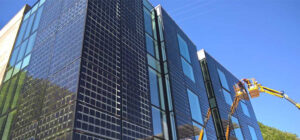
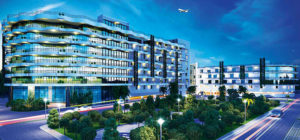
Efficient Curtain Walls: Characters, Types & Performance Testing
Curtain walls are one of the most prominent features in modern buildings. They are placed on the surface of a building, forming a barrier between the interior and exterior of the building structure and act as a protective shield. Its main purpose is to keep air and water out of the building and is subjected to weathering actions like wind, sunshine, frost, etc. In this cover story, experts from the industry, including architects, façade consultants, builders, developers and manufacturers of important façade components explain the characteristics of an ingenious and well-designed curtain wall, different types of curtain wall systems, the need for performance tests, challenges associated with erecting of curtain wall systems, reason for failures, common faults found in such façade systems and solution for the same. Characters Of A Well-Designed Curtain Wall [caption id="attachment_40649" align="alignleft" width="150"] Balaji Gunasekaran Project Manager-Associate at KGD Architecture[/caption] Glass curtain wall systems are extensively...
Posted on: 22 Jul 2020
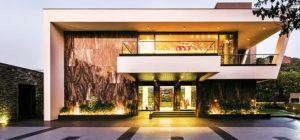
Ventilated Stone Cladding System
Stone cladding of buildings has always been part of the architectural design for thousands of years. Its aesthetics and a sense of permanence have made it a popular material amongst builders and architects. Stone cladding systems have vastly improved over the years with the advances in technology and improved building systems. Conventionally, dry cladding systems consist of a process of fixing stone slabs with stainless steel brackets anchored to the wall or to an MS subframe. The joints between the stone slabs are closed with a sealant. In this system, the gap created between the wall and the stone cladding has no ventilation. The sealant used in this system also eventually deteriorates, causing ingress of water, which could affect the MS framework causing corrosion and eventually weakening the system. A ventilated stone cladding system has several advantages over conventional dry cladding systems. In broad terms, a ventilated facade is composed...
Posted on: 15 Jun 2020
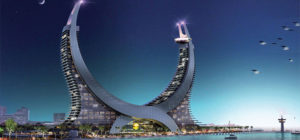
Creative Curtain Walls: Systems & Designs
Façade is one of the most crucial parts of a building and adds a visual outlook as an effect on the entire building’s design. A building façade has many layers to protect the exterior of the building, providing it sustainability, at the same time it’s identity. Façades should be aesthetically pleasing and its exclusivity is the requirement of the present era. Curtain wall and cladding are the integral part of a façade system. With the right choice of façade, by keeping in mind the materials’ durability, sustainability, compatibility and suitability, safety and availability, the look and lifespan of the entire building can be transformed. The right material gives a perfect façade. For this cover story, we interviewed a few top names from the Middle-East’s façade industry to help our readers in choosing the best suitable solutions for their building façade requirements. The experts have also shared their views on the...
Posted on: 09 Jun 2020
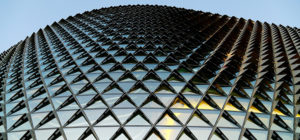
Benefits of Performance Glass in Modern Façades & Fenestration
Performance glass is a glass that provides benefits to its end users (building occupants). The glass helps in achieving benefits for the structure like reduced HVAC loads and light comforts. The need to have different types of glass on façades arises due to many factors such as local climatic condition, external wind pressure, building occupancy type, building geometry, area of application etc. Energy Efficiency not only plays an important role in society but also plays an important role in shaping the future. While choosing performance glass, two aspects are to be taken care of by the occupants: a) Optimise light to reduce the need for artificial light b) Cut down the heat inside building to reduce the load on air conditioning The selection of the right type of performance glass for the building envelope is critical for building efficiency point of view. We continuously work to create new glass products...
Posted on: 06 May 2020
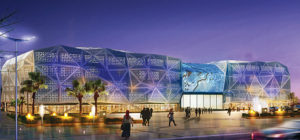
Glass – A High Performance Functional Material
Please brief on types of Architectural Glasses used on Modern Facades and Fenestration? The architectural glass comes in different categories. Few that are majorly used are laminated, insulating, coated, tinted, wire, smart glazing and many more categories. Please brief on the Functional, Structural and Energetic aspects of Glass Facades and Fenestration? Everywhere you look today you’ll see some sort of structural glass facade. Major improvements have been made in the facade engineering to make glass one of the primary means of construction for new buildings. Not only does glass have a great visual appeal, but it now serves more functional purposes. Functional Aspects: Allowing sunlight to enter into a building can save electricity as you can use natural light instead of artificial lighting. Contrary to what may be the public perception, technological advances in glass has helped it regulate heating and cooling in buildings. With the strict energy requirements placed...
Posted on: 30 Apr 2020
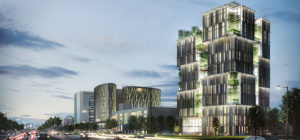
Glass & Glazing Technologies Increasing Efficiency of Building Systems
One of the most prominent trends in the last few years in real estate has been the usage of glass façades. Most of the iconic buildings in Indian metros today are elegant corporate houses with glass façades. Today, glass façades have become an industry with several companies offering a plethora of choices in everything from supplying different glass to customisation, cleaning and maintenance. The reason for architects' and developers' preference for glass is because it reduces the weight on the foundation and hence makes the building lighter as compared to constructing walls. Structurally glazed façade systems create greater transparency than traditional captured systems. There are fewer visual interruptions due to the use of less metal on the glass façades, creating a seamless, continuous transparent look, merging the interiors with the exterior. Since there is little to no exposed exterior metal, there is also less thermal bridging with structural glazing, saving...
Posted on: 29 Apr 2020
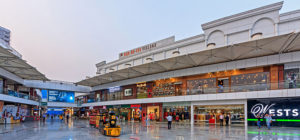
“Glass has Revolutionised the Façade Industry”
In an interesting conversation with WFM, Ar. Mitu Mathur talks about her practice, their latest projects, the evolution of façade and cladding technology and trends in India and many key factors to consider while designing and choosing materials for façades. Here are the excerpts from the interview. Could you please tell about your practice and your firm's journey? [caption id="attachment_38484" align="alignleft" width="500"] National Institute of Design, Bhopal[/caption] Architecture is not just a profession, but a passion that drives our family. Me and my sister are third-generation architects. Our father, Gian P. Mathur started the practice 40 years ago and since then we have been blessed with opportunities and embraced all new kinds of projects that are being introduced in the industry over the decades. When my father started the practice, our firm did a number of prominent, particularly industrial projects. With the onset of commercialisation, we ventured into a variety...
Posted on: 20 Apr 2020
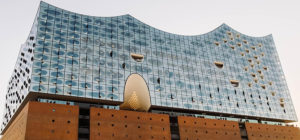
Shaping Glass Façades in Age of Parametric Design
Glass has been present for more than 5000 years on Earth. Its earliest existence was noticed in Egypt and eastern Mesopotamia, where it existed in the form of beads. Later, craftsmen around the world learned to blow it into different shapes and colours to produce unique artefacts. The first examples of glass in architecture appeared in Roman civilisations where the glass was put in wood and bronze frames to open up buildings towards outside environment. Glass gave an opportunity to experience outside environment and light while being indoors. Therefore, glass became a favourable material for wrapping buildings by architects. Many innovations happened in glass production and manufacturing, but the major shift in glass production was the result of an invention by British scientist Alastair Pilkington. Pilkington has developed the process of manufacturing float glass by casting it on the bed of denser liquid tin. This process allowed the glass to...
Posted on: 14 Apr 2020
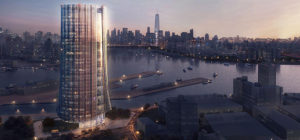
Circadian Curtain Wall Geometry Inspired by Nature
HOK’s Circadian Curtain Wall concept draws on biophilic design to offer building occupants abundant natural light while minimising solar heat gain. How can façade systems play a more important role in improving employee health and well-being? That was the challenge in a recent competition, and it got me thinking about an idea. For the past two years, me and my colleagues in HOK had been working on a concept for a load-bearing façade for high-rise buildings. [caption id="attachment_37550" align="alignleft" width="500"] Inspired by the 24-hour circadian clock, the façade’s design maximises building occupant’s exposure to daylight and the daily rhythms that influence human health[/caption] That design of structural exterior enclosure, replaced much of the aluminium found in modern curtain walls with steel, giving the façade additional strength to serve as part of the building’s overall framing and, because steel requires one-third the amount of carbon to produce as aluminium, reducing its...
Posted on: 01 Apr 2020
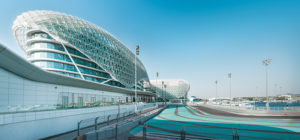
Architectural Glass: Leading the Race in the Middle East
When we saw a building, the first thing which attracts us towards it is the façade. Buildings with glass façades keep us mesmerised by the beauty it adds to the structure. The glass helps the building in connecting them with nature and the surroundings. We can see the use of glass in buildings in various forms, it is being used as insulation material, structural component, external glazing material, cladding material, etc. Glass as a building material delivers beauty, visibility, and light transmission. Glass transmits up to 80% of natural daylight and helps in energy and cost saving. Glass as become the most popular building material because of its versatile nature. The adoption of green technology in construction is also a major reason behind the growing demand for glass in building envelopes. Glass as a building material will always remain in demand. Glass transmits up to 80% of natural daylight How...
Posted on: 30 Mar 2020
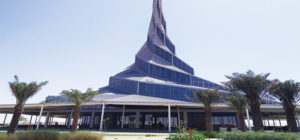
“With the Advent of Technology, Glass has become a Responsive Building Element”
What is your take on the growing demand for glass in niche and low-rise applications? Glass, being a versatile material, founds its usage in many niche applications. Due to its inherent property of being transparent, it has started replacing other common building materials. For instance, we have seen a steep growth in the usage of fire-rated glass for partitions & doors. Full metal or wooden doors are being replaced with small vision panel doors, full glass doors, and full-height fire-rated glass partitions. We have also seen glass being used for various architectural masterpieces, whether it is a luxury retail area, mall or airport. Here, architects make use of specialty glass products that can play with the colours and light. What are the trends in architectural glass in the Middle East? The rulers of the UAE have the vision to move the country forward and make it a futuristic place where...
Posted on: 26 Mar 2020
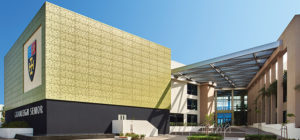
“Architects Use Glass to Add Touch of Class to Structures”
After winning the TFT Architect of the Year award, Christine Reyes Espinosa-Erlanda Associate, Godwin Austen Johnson shares her journey in the field and what are her key success mantras. Here are the excerpts… What inspired you to become an architect? How has been your journey so far since you started your career? My creative instincts began with chalk drawings on the wall of our home in Manila, Philippines where I grew up. I studied in a pre-engineering high school and from there I realised how impressive buildings are, how these structures encapsulate time and act as silent witnesses to man’s endless potential. I understood from there on that a building involves far more than its appearance and, as an architect, I wanted to be part of an industry that creates and shapes the present and future cities. Moving to Dubai was a pivotal moment in my professional career and now...
Posted on: 23 Mar 2020
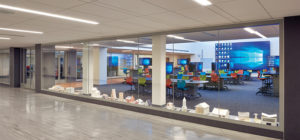
Fire Safety Glass : Clearing Up your View with Fire-Rated Frames
As modern buildings continue to rise around the Middle East, the increasing presence of glass is hard to ignore. Efficient cooling systems, innovations in construction techniques and modern glazing methods and systems have all helped glass emerge as a design solution that integrates into the historical landscapes common to our region. Additionally, design professionals are pushing the boundaries of bold design, forcing manufacturers and suppliers to innovate alongside them to deliver beautiful building materials for beautiful buildings. The benefits glass offers when used in the building envelope - openness and natural light - can transform internal spaces. Likewise, glass-filled interiors can improve visual connectivity, access to outside views and, as numerous studies show, occupant well-being. Design professionals want to capitalise on glass’ benefits, but this can be difficult with traditional fire-rated materials. Traditional fire-rated materials used to provide fire protection, such as concrete and gypsum, can block views and create...
Posted on: 19 Mar 2020
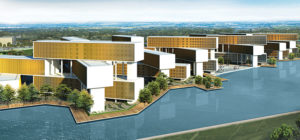
Creating a Distinctive Identity through the Integration of Building Engineering Systems & Technologies with Architectural Design
Tell us about the advancement in facade design technologies and materials in the past 5 years. There has been an exponential growth in facade technologies and material in the last few years, that focus on energy-efficient materials and fabrication systems, as buildings have become one of the primary consumers of energy. Furthermore, the building envelope, consisting of a facade and roof, can contribute largely to energy conservation to maintain a balance between thermal and visual comfort. Advancements in the material technology and in the construction methodology, along with innovations in fabrication systems have aided in achieving the facade design aesthetic with maximum efficiencies, imparting identity to the building without compromising the energy efficiency parameters. [caption id="attachment_36354" align="alignleft" width="300"] Fig 2: Parametric studies done for form-finding for IT project in Nagpur for Infosys[/caption] What are the advancements in energy harvesting facade technologies? Energy harvesting is yet to be completely successful for...
Posted on: 05 Mar 2020
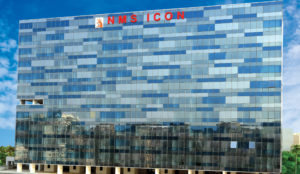
Glass Yields itself to Multiple Applications
What is your view on the growing demand for Smart Glass in niche and low-rise applications? Smart Glass for façades and cladding is becoming more commonplace, because of the sheer functionality of the material. Energy-efficient glazing in the vision area optimises the natural daylight and the heat ingress into the building. To have smart glass cladding in both interior and exterior applications, makes it easy to clean and maintain, while making the architectural element aesthetically appealing. Smart Glass also yields itself to multiple applications; the increasing use of glass is only natural considering our changing architecture, limited space, larger floor space, and an increasing emphasis on user comfort (thermal, acoustic and visual). Applications of glass and related solutions in niche applications are more prevalent, because of increasing consumer awareness, global sensibilities of designers and improved technology from a manufacturing standpoint for customisation. Throw some light on the choice of glass...
Posted on: 11 Feb 2020

